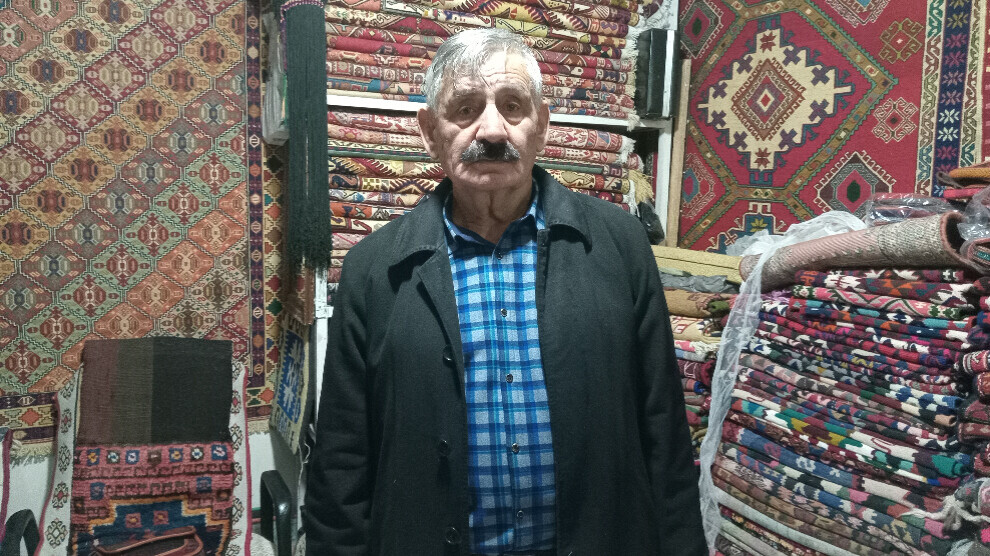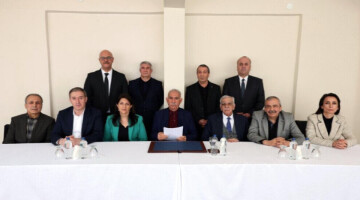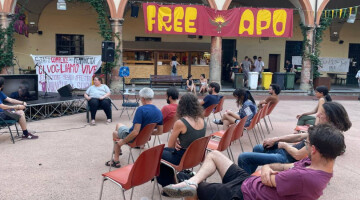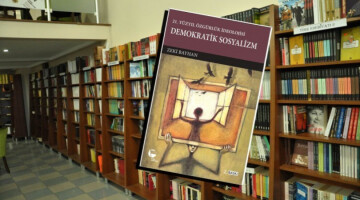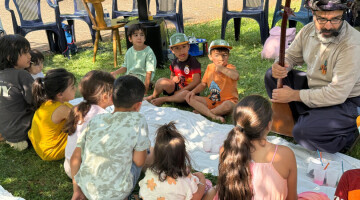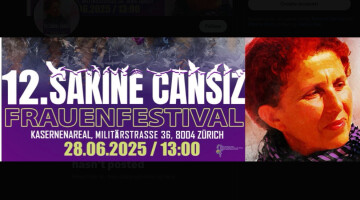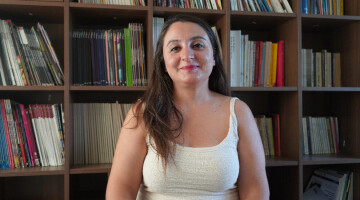When we talk about Kurdish kilims, it's never just about carpets, but rather a form of ancient tradition of a history shaped by women.
Every motif has its past and women wove their stories into the carpets. It is a job that was carried out especially in winter. In the summer, women moved to the mountain pastures with their herds of animals and lived there, often independently of men who stayed in the villages and towns and did other work.
An iconographic method of conveying knowledge
The women registered their nomadic life, their mythology and their traditions in the imagery of the kilims and passed them on to their daughters over generations. The provinces of Van (Wan) and Hakkari (Colemêrg), located on the Turkish-Iranian border and opposite Rojhilat, another centerpiece of Kurdish carpet culture, are considered to be the important center of kilim production in North Kurdistan.
However, both provinces are badly affected by the war and the economic devastation caused by Turkish colonial fascism. A large part of the population has fled, and the pasture economy has been destroyed by military-restricted areas. While in the past kilims were made in almost every home and women wove their realities and motifs into the carpets, today there are only a handful of shops that sell them. Every kilim has its own story, which is hidden in the complex patterns of the weaving threads. They are images from the natural environment, for example animals or plants, or reflect emotions such as joy and suffering as well as people's tribal traditions.
Kilims document the flora and fauna of the Kurdish mountains
It's not just plant ornaments that are on the carpets. The new wool, usually from sheep from our own livestock farm, is dyed with natural colours, the production of which is based on old, traditional recipes from the endemic mountain flora. This also makes the carpets unique. But many of the kilim motifs are no longer known today because they are no longer produced and the oral Kurdish tradition behind them is in danger of disappearing. Sometimes the motifs are still there, but the meaning is forgotten.
Threatened by economic crisis and assimilation policy
The Van and Hakkari carpets embody not only the culture and art of the Kurdish people, but also their memory and history. The assimilation policy of the Turkish state and the AKP government, the economic crisis, the oppression and the war in the region are among the main reasons for the disappearance of this culture. In the past, many people earned their living through carpet weaving. Today there are no weaving mills or shops selling carpets in Hakkari. There are still a few workshops and businesses in neighboring Van. But the remaining places where carpets are manufactured and sold are on the verge of closure due to the economic crisis.
Weaving is no longer profitable
One of these workshops belongs to Kazım Bor. He also runs a shop in the center of Van for the sale of 'his' carpets, which are made by women through lengthy handwork and dyed with roots. Bor said: "We have them made ourselves. Everything is handmade. None of them are machine-made. Many of the carpets in the company are centuries old. There are also carpets made from a mix of cotton and sheep's wool. The kilim is an expression of the culture of the Kurdish people. It is a tradition that we learned from our ancestors. Some houses still have old looms, but very few weave carpets. Carpet weaving has become a very expensive business and is in danger of extinction due to the economic situation. Before the Van earthquake, I had 40 looms. Now there is only one loom. It’s no longer worth it."
Of the old 300 stores, only three still exist
The patterns of the kilims are usually in the tradition of their areas of origin. According to Bor, well-known nomadic carpets that get their name from the place where they are made include Canbezar, Luleper, Gulsarya, Şehvanî, Gulgever, Gulsarya, Nehrek, Halit Begi, Sine, Keskener, Çilgul, Gulçîn, Gulhazar, Gulşîvan, Herkî, Hevçeker, Şamarî and Şimkubik. Bor said: "These Kurdish carpets are known all over the world. If we were supported, the tradition could be revived. If you look at history, our kilims are an ancient tradition of our ancestors. There used to be almost 300 shops in Van, but now there are only two or three shops selling carpets. The woven memory of Kurdistan is being lost."

